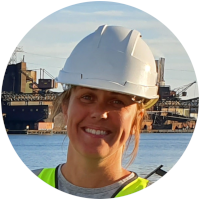Hege Indresand
NORCE Norwegian Research Centre , Norway
- Conference: Best Practice in Monitoring Methods
- Presentation: Assessment of diffuse emissions in industrial settings
- Presentation Time: Day2 - 16:20


Dr. Hege Indresand is a Senior Research Scientist at NORCE Norwegian Research Centre with the Smart Instrumentation and Industrial Testing group in Southern Norway. Indresand brought her experience from measurements sceience and analytical chemistry in air quality and atmospheric PM research in USA (UC Davis, California, USA), to Norway some years ago , and has since focused her research on industrial diffuse dust emissions in metallurgical industry.
According to the EU BREF Monitoring of Emissions to Air and Water from IED Installations (ROM), diffuse emissions to air can in many cases be of environmental and economic importance, and for some industries they can potentially be greater than the point emissions. Several of EU's BAT conclusions require companies to assess their sources of diffuse emissions, establish an action plan and implement measures to capture and reduce the diffuse emissions. There are different approaches on how to carry out assessment of diffuse emissions in order to obtain data with good enough quality. ROM considers quantification of diffuse emissions to be resource- and cost-intensive. The measurement uncertainty when determining diffuse emissions can also be very high.
This presentation will introduce and discuss a new report made in Norway to the Norwegian Environment Agency to provide information to industries and other stakeholders on various methods for surveying and measuring airborne diffuse emissions sources. The material is mainly about dust and environmental toxins in dust. The report provides insight into different sources, an overall method for assessing the sources, and suggests methods for qualitative or quantitative characterization. Fence line ambient measurements and dispersion calculations to characterize diffuse emissions are also covered. This report describes both established and standardized methods, as well as practical approaches for determining diffuse emissions.
When measuring diffuse emissions, it is not always possible to follow standardized methods. Standards for emission measurement often presuppose an emission via a duct or chimney with a defined opening and straight pipe sections before and after the measuring point. Diffuse emissions from buildings, from outdoor activities or transport of materials often do not occur through such defined emission points. In addition, lack of space, opportunities for access and characteristics of the discharge may limit the possibility of complying with the requirements in standards. If it is necessary to make practical adaptations or simplifications, one must assess the significance of this against the purpose of the measurements and the requirement for accuracy. In a phase of mapping different sources of diffuse emissions or prioritizing measures, there may be good reasons for simplifying measurements. If the measurement results are to be used for reporting emissions and to document that emission limits have been complied with, the measurements must be carried out so that they are representative of the actual emissions. If methods are used that deviate from the standardized methods, one must consider how this affects the measurement result.